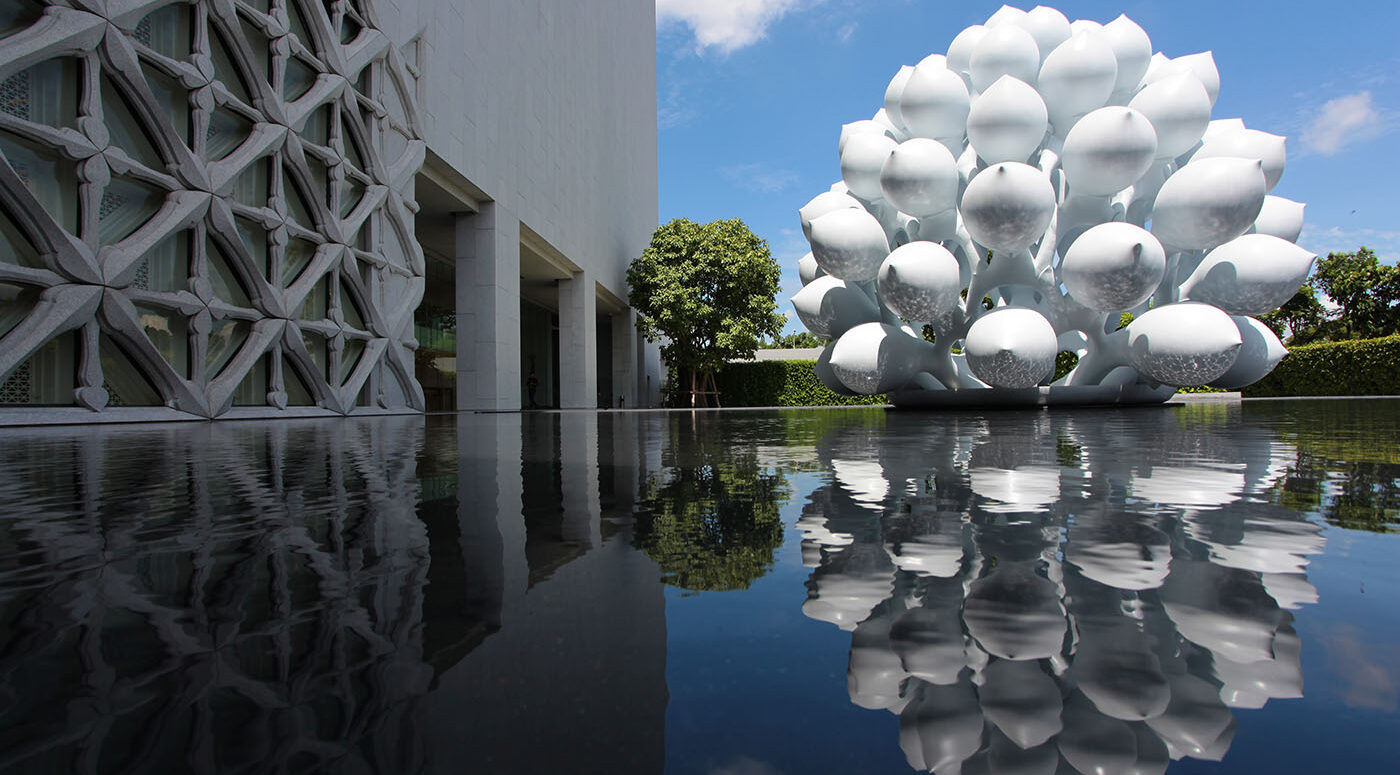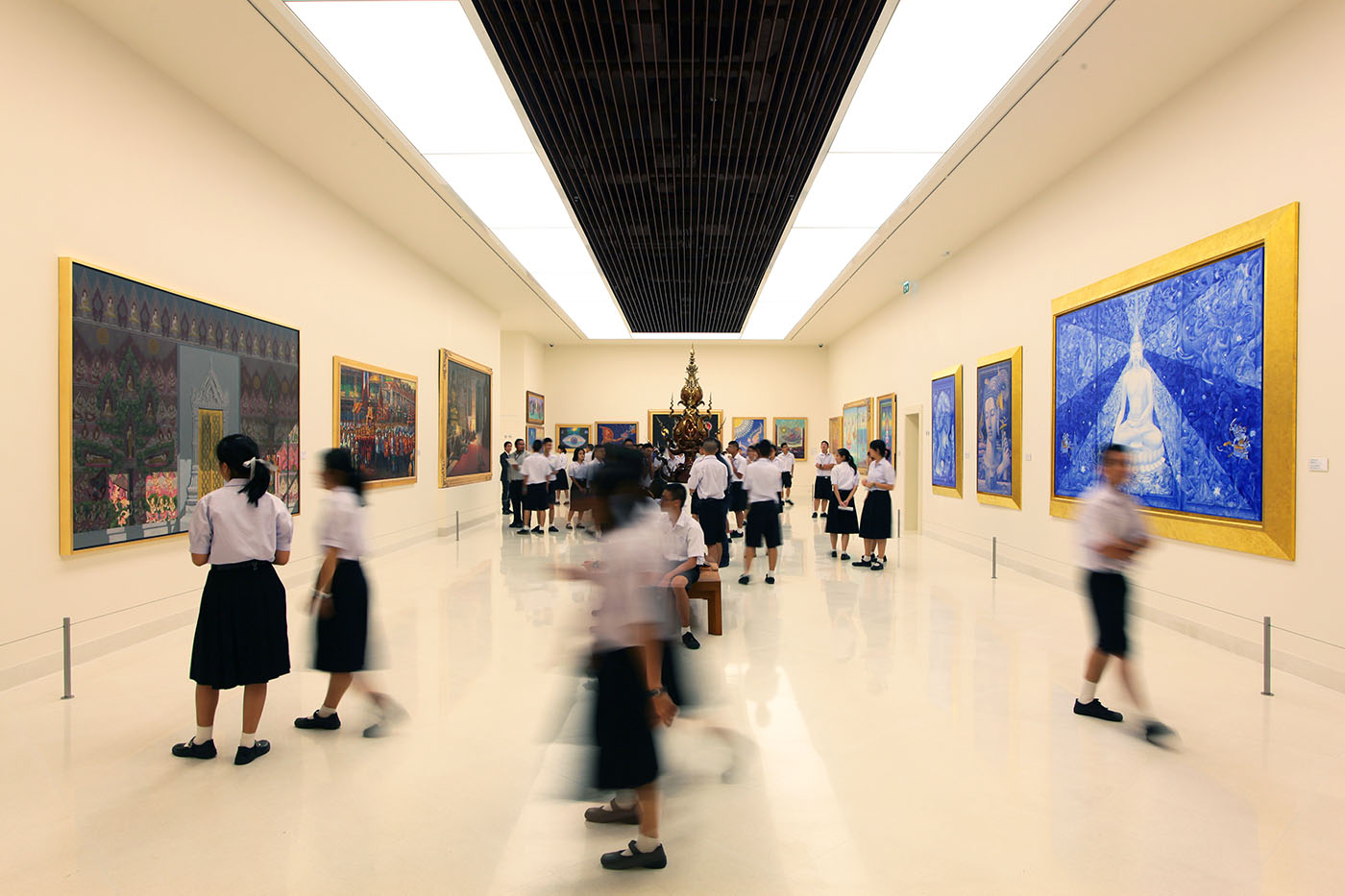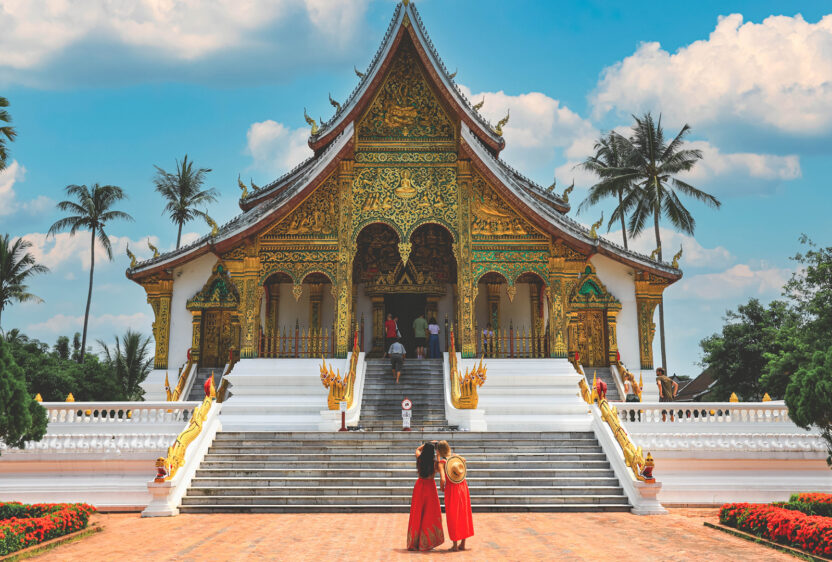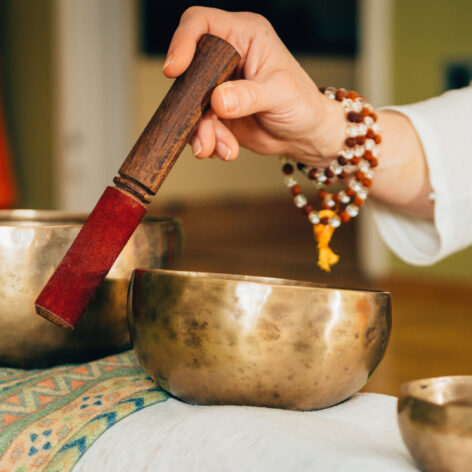The Museum of Contemporary Art in Bangkok, which celebrated its 10th anniversary this year, was born from the personal collection of Boonchai Bencharongkul, the founder of Thai telecoms giant DTAC. Today the museum is run by his son Kanachai, but the presence of the elder Bencharongkul — who remains a guiding force — is palpable throughout the imposing building.
Better known as MOCA Bangkok, the sheer granite façade houses over 1,000 works of art by Thai and international artists. The dramatic lightwell at the center of the building and the jasmine-petal cutout windows bathe the minimalist white interior with natural light. The interiors are the work of PIA, one of Thailand’s leading design firms.
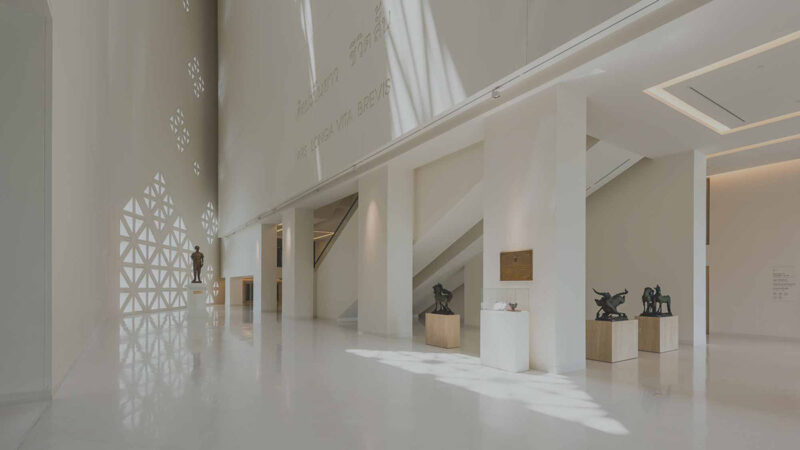
The Italian artist who defined Thai art
MOCA’s collection is first and foremost Bencharongkul’s tribute to Silpa Bhirasri, easily the most influential figure in 20th-century Thai art. His statue stands at the center of the lobby. (Visitors with a sharp eye will also spot a second figure of Bhirasri at work behind a window above the lobby area.)
Bhirasri, born Corrado Feroci in Florence, is considered the father of modern Thai art. The Italian founded Silpakorn University to promote the study of fine arts and to produce artists who created works that were an integral part of khwambenthai or Thainess, the essence of Thai national identity. The Italian artist was himself naturalized as a Thai citizen in 1943.
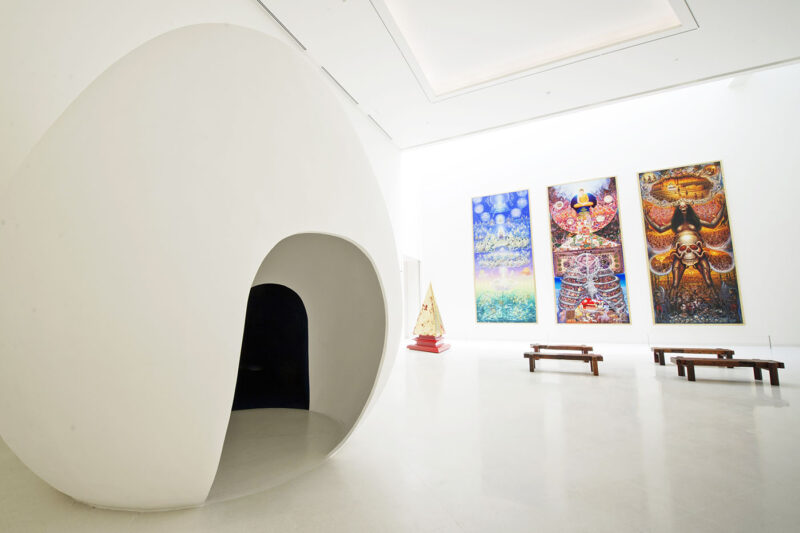
The collections
Though recent acquisitions include some edgier, more socially-minded pieces like the videos of Kawita Vatanjyankur, in which the artist uses her own body as a digger or a toilet brush to reflect on the human condition, the collection was originally designed to be an introduction to official art from the Silpakorn school of thought, its students and the national artists who enshrine that distinctly Thai identity.


